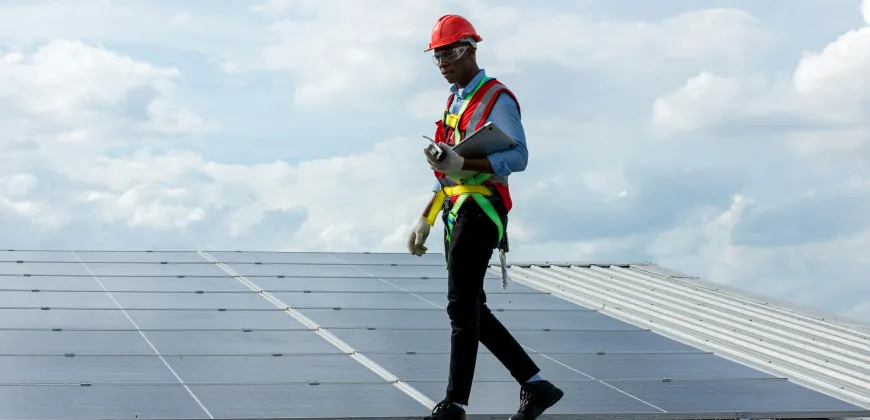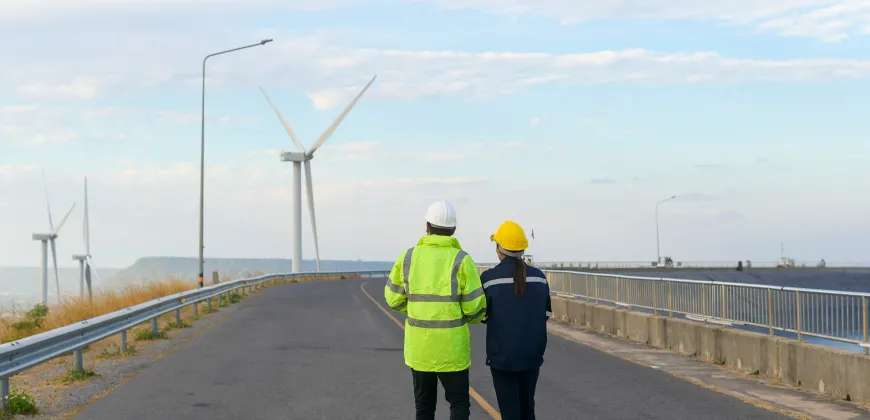Renewable Energy Innovations: Program Insights

In a conversation with MEL in CEEN Program Director Dr. Vladan Prodanovic, we delve into the shifting landscape of renewable energy. Dr. Prodanovic emphasizes the critical need for cleaner processes in industries like steel production. He also sheds light on the evolving strategies of traditional energy companies towards cleaner technologies. Vladan highlights the importance of leadership and integration in preparing students to lead the renewable energy revolution.
Tell us about your research.
My position at UBC is focused on educational leadership, and I am interested in how curriculum development and project-based learning can support the next generation of engineers.
I also have research interests in thermal modelling, primarily as it applies to the steel industry. Steel production requires very high heat, making it a carbon-intensive process and one of the largest producers of greenhouse gas emissions. Given that steel is an essential material for so many industries and applications, we need to find ways to produce steel in the quantities that are needed while reducing the greenhouse gas emissions associated with its production. Steel manufacturing is just one of many industries that are seeking ways to reduce energy consumption and adopt cleaner processes.
What changes have you seen in the clean energy sector over the past few years?
We can see that companies in the oil and gas industry are repositioning themselves, with some of the largest investments in clean energy coming from countries in the Middle East and other gas-producing regions. These companies have significant infrastructure in place that can be used for clean energy applications, like blending hydrogen with natural gas or renewable natural gas.
It’s not black or white. We can’t just stop using natural gas overnight – we are in the midst of a transition period.
Of course, there is a profit motive and policies and regulations are also pushing for a shift. But these companies have the knowledge and infrastructure and are exploring how to use those assets in a good way. There’s something similar happening next door in Alberta, where a consortium of companies involved in the oil sands are planning one of the largest carbon capture and storage projects in the world. It’s interesting to see these initiatives.
What are some of the opportunities for renewable energy professionals?
There are a lot of opportunities in integration. Many renewable technologies are well developed. Look at solar panels, for example. Sure, we might see some technical advances – like integrating new semiconductors or using thinner, flexible structures – that might enable us to increase their efficiency by a few percentage points. But the physics are more or less known and any technical innovations will not be of a game-changing magnitude. However, there is a lot of potential to make a big difference by integrating renewable technologies, such as producing green hydrogen or integrating energy storage.
The combination of different renewable technologies can generate some impressive results and efficiencies.
How does the Clean Energy Engineering curriculum equip students to be leaders in this field?
I think our holistic and integrated curriculum plays a big part in our students’ success. As much as possible the courses build on each other and provide a systems view of the sector. I teach two courses in the summer, one on sustainable energy systems and one on energy storage and transmission. That gives me a lot of flexibility to shift content and explore topics that come up in each course. Once we’ve covered the basics of different renewable energy systems, we can dive into case studies and explore the interconnections and real-world challenges at the intersection of energy storage, sustainable energy systems, policy and economics. [Read an article about a four-day field trip to Vancouver Island organized for students in the Clean Energy Engineering program to visit renewable energy projects and meet with industry leaders.]
The magnitude of the transition to renewable energy is significant.
We need people who understand what is possible and what is not possible to achieve at various stages and who can share that understanding with a wide range of stakeholders. The business and leadership courses help students develop those communication skills.
What are employers in the renewable energy sector looking for?
My industry counterparts are interested in hiring professionals who can integrate technical analyses with an understanding of other important considerations, such as the economics of a project and its social impact.
What makes the MEL in Clean Energy Engineering unique is that it builds future leaders.
Our graduates understand the technical side of things as they come to us with engineering backgrounds. This program enables them to update and expand their knowledge, and to gain new skills as integrators and as leaders.
How are graduates of this program leading in clean energy?
I see graduates of the MEL in Clean Energy Engineering taking leadership roles in companies. This doesn’t always happen right after graduation, but within a short time, they are moving into positions where they are leading projects and teams. Many of our graduates have found great satisfaction in working with remote Indigenous communities to find energy solutions that are affordable and appropriate. These communities currently depend on diesel for electricity generation and their dwellings are often outdated.
Technical expertise is important, but equally important is knowing the right approach, being respectful of local culture and traditional use of land, and being able to communicate effectively to help communities make the decisions that are best for them. Again, it comes back to being an integrator.
What do you find most rewarding about being part of the Clean Energy Engineering program?
First: this work matters and it will matter more and more. Second is the opportunity to work with students who have such vast knowledge and expertise. Our discussions often feel like a collaboration of colleagues – I learn from them and they learn from me.
Finally, it is very rewarding to see the connections within the cohort and how our graduates are moving into leadership positions are how they are highly regarded as ground-movers who are doing important things.



